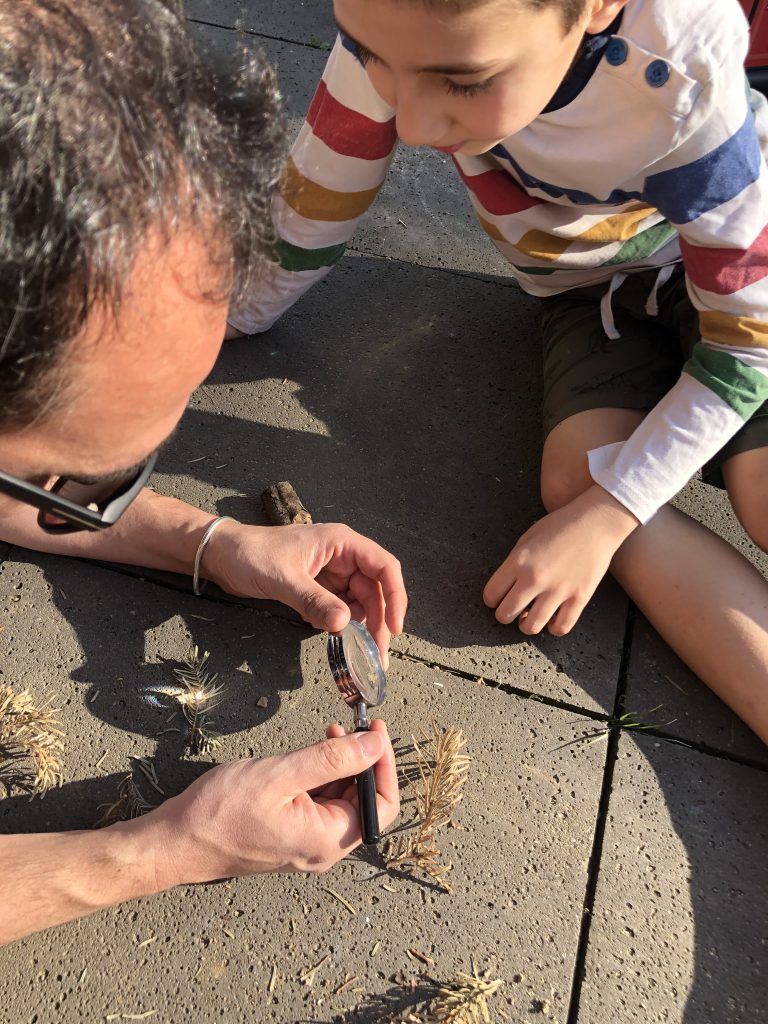Impatience and I mean… ‘wanting’ for something… ? Come on! Everybody wants things immediately!
It is a typical feature of young children. There is at the beginning none or very little permission to any delays. Their sense of time detection is different from ours, adults. Children often don’t know how to measure time and the minutes that pass from the moment they ask for something until they get it. This waiting time is like a black hole, a gap. It feels for them like the time stops – it becomes an eternity.
On top of that – the more they desire what they are waiting for, the more the time extends! Amazing!
As it happens with the development of different skills, the ability to wait, postpone, manage, and tolerate the frustration of not always so easy to explain, train, and handle. Being able to wait and not have everything immediately is not innate but is gradually learned and developed.
Often, children cannot tolerate ‘waiting‘ and can put a strain on the patience of parents, overwhelmed by their requests and/or time that passes.
It is a part of the learning process and a way of accepting the reality of life getting used to this way generated frustration and inevitable delays.
Actually, it is a gradual and progressive training for all children.
Here you have some tips for smart tricks that will help your child in exercising the patience:
Introduce small expectations regarding ‘the wait’ time
“Waiting increases desire and pleasure!”
Start with a few minutes exercises and increase through the time. Make sure your child engages and enjoys – this is a key element for successful learning!
Use picture books

Mo Willems – “Waiting is not easy”
Mary Ann Fraser- “Milton & Odie and the Bigger-than- Bigmouth Bass”
Phillip Stead – “Bear Has a Story to Tell”
Annemarie Riley Guertin – “How the Finch Got His Colors”
Be consistent – deliver the promises
If you say you will play together after breakfast – do it. If you promise you will help once they clean their room – do it.
Never leave them with hope and expectation without concluding after you gave your word.
Use visual prompts

In any case, visually exposed children learn much faster and with more pleasure. You can use a sand glass timer or a classic kitchen timer that shows in a different color the time that still remains until the waiting time will be over.
Waiting and patience explained in simple words
If we told him that “after breakfast, we will go for a walk together”, we always try to do what we promised. Only then will they learn that it is worth waiting.
Experiment! Funny and catchy activities do for you!

We experiment! Long experiments that take a very long time as a week. For example the one with salt crystals and the rope. This one is an ‘extreme sport’ for the super-resistant ones!
But you can definitely start with some instant ones like the candle in the water under the glass – this one requires only a few minutes to prepare and to execute.
If your child likes gardening and plants in general you can use some seeds to grow some sprouts – beans are perfect!
Well…I don’t have to tell you about ‘Coca-Cola and Mentos’ classic experiment that makes every kid laugh.
Good manners vs social rules
Explain good manners to your child and also use social situations to clearly make your point. You can comment about other people on the street or in the supermarket when they do something not actually proper or do not act politely. In the doctor’s waiting room, during travel or during queues, you can invent small games. Relate to common sense as well, not only to the raw rule set every person should respect.
Be a good role model
They copy, and they imitate perfectly! Eyes and ears always ready for the reception of anything.
Be flexible, understanding, and generous
Your child does not have to be patient and perfectly responsive every time you want to teach her or explain something.
It is also essential to reward patient children. You can prize them with phrases like “I know it was difficult and I appreciate that you were patient”.
In this way, the foundations are laid for an emotional deposit necessary for self-esteem. They will learn to recognize themselves as patient individuals.
To recognize and support children’s emotions and the manifestations of their feelings, it is necessary to gradually nurture their self-esteem and their autonomy. Learning to manage ‘the wait’ allows the child to acquire another ability, which will prove invaluable for his future – consistency!
